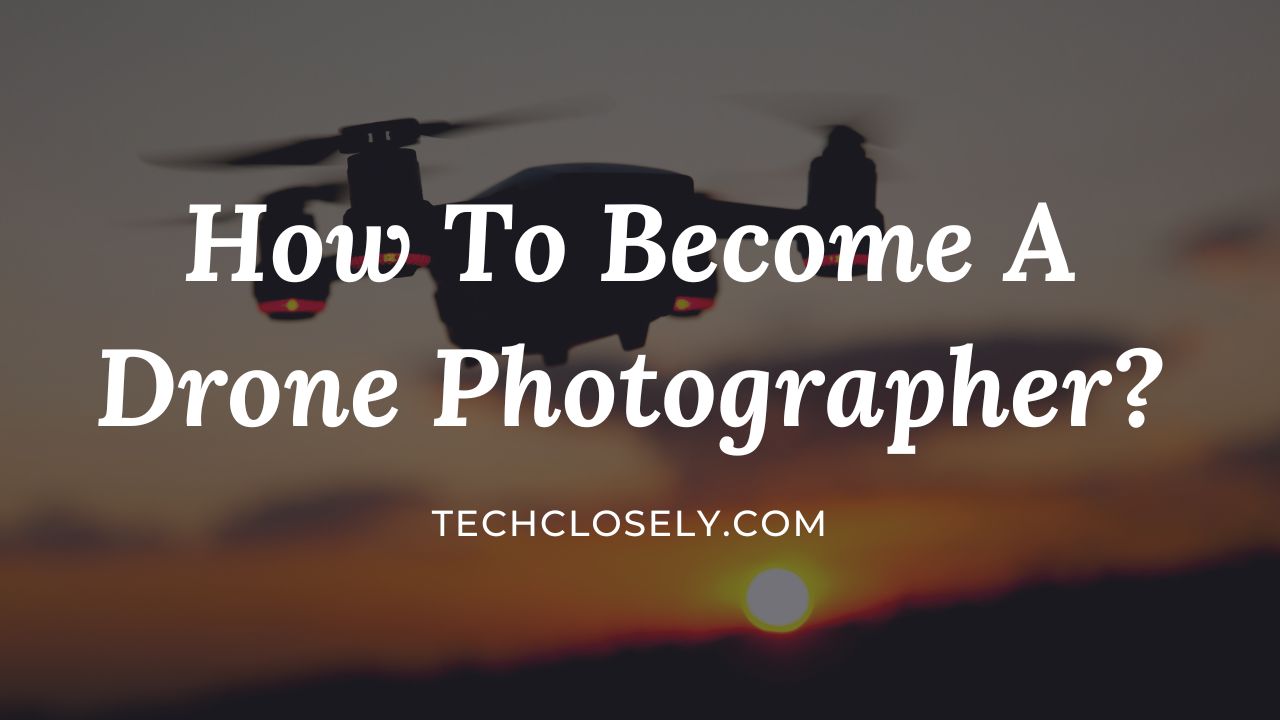In today’s visually-driven world, aerial photography has become a captivating and sought-after art form. The ability to capture stunning landscapes, architectural marvels, and breathtaking perspectives from the sky has revolutionized the way we view and appreciate photography. And at the heart of this revolution lies the rise of drone photography.
Drones, equipped with high-quality cameras and advanced stabilization systems, have opened up a whole new realm of possibilities for photographers. They allow us to soar above the ground, capturing images that were once only possible from helicopters or airplanes.
The growing popularity of drone photography has created a demand for skilled and creative individuals who can master the art of capturing awe-inspiring aerial shots.
If you’re intrigued by the idea of becoming a professional drone photographer and want to unlock the vast potential of capturing images from the sky, you’ve come to the right place. In this blog, we will guide you through the steps to embark on your journey as a drone photographer.
From understanding the different types of drones and their features to navigating legal and safety considerations, we will provide you with the knowledge and resources you need to fly safely and legally. We’ll also delve into the techniques and skills required to capture stunning aerial photographs, along with other tips to enhance your visuals.
But becoming a drone photographer is not just about the technical aspects. We’ll also explore how you can showcase and market your work to build a successful drone photography business.
Additionally, we’ll provide you with valuable resources, communities, and competitions to further refine your skills and stay connected with fellow enthusiasts.
So, without further ado, let’s get started on How To Become A Drone Photographer.
1. Understanding Drones and Photography
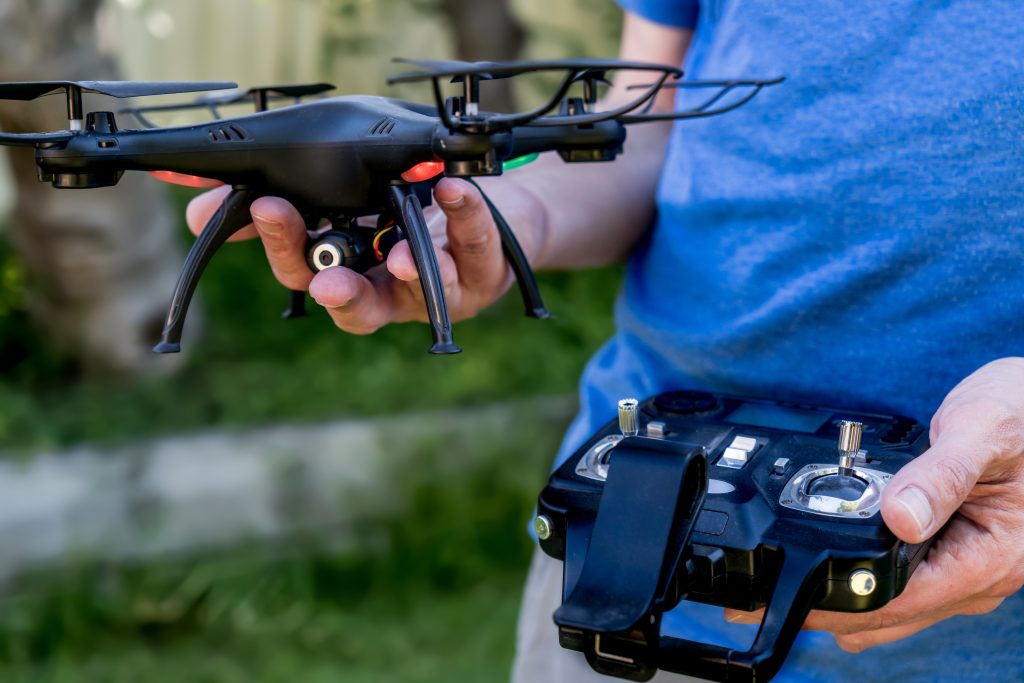
To become a proficient drone photographer, it’s essential to understand both the technical aspects of drones and the fundamentals of photography. In this section, we will delve into the key elements of understanding drones and their relationship with photography.
- Drone Technology: Familiarize yourself with the different types of drones available in the market. Drones vary in size, capabilities, and features.
Some drones are specifically designed for aerial photography, equipped with high-resolution cameras and advanced stabilization systems.
Understanding the technology behind drones will help you make informed decisions when choosing the right equipment for your photography needs. - Camera Specifications: Pay close attention to the camera specifications of the drones you consider. Look for features such as sensor size, resolution, lens quality, and the ability to shoot in RAW format. A good camera on your drone will allow you to capture high-quality images with excellent detail and dynamic range.
- Stabilization Systems: A key feature of drone photography is stability during flight. Look for drones equipped with stabilization systems such as gimbals, which help minimize vibrations and ensure smooth footage or sharp images.
Effective stabilization is crucial for capturing professional-grade aerial photographs. - Flight Control: Understanding how to control and maneuver your drone is essential for capturing the shots you envision. Learn the different drone flight modes, such as GPS-assisted flight or manual mode, and practice flying in open spaces to develop your piloting skills.
Becoming proficient in controlling your drone will enable you to position it precisely for the desired composition and perspective. - Photography Basics: While drones introduce a new way of capturing images, the fundamentals of photography remain crucial. Understand concepts such as exposure, aperture, shutter speed, ISO, and composition. Applying these principles to your drone photography will help you create well-exposed, balanced, and visually appealing aerial photographs.
- Pre-flight Planning: Before each drone flight, engage in pre-flight planning to ensure a successful photography session. Consider factors such as weather conditions, airspace restrictions, and the location you plan to fly.
Checking weather forecasts, familiarizing yourself with local regulations, and scouting the area in advance will help you capture stunning aerial photographs safely and legally.
By gaining a solid understanding of drones, their technology, and the basics of photography, you lay a strong foundation for your journey as a professional photographer. This knowledge will empower you to make informed decisions when selecting equipment, optimizing camera settings, and capturing breathtaking aerial drone photography.
Remember, as with any skill, practice and continuous learning are key to mastering the art of drone photography.
2. Buying a High-Quality Drone
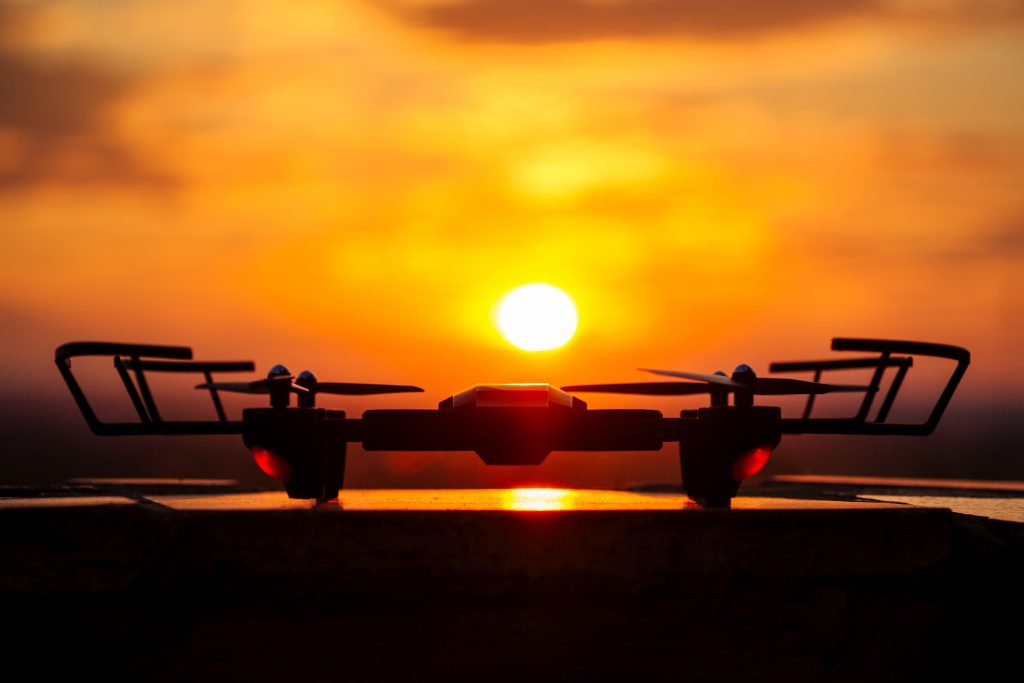
When venturing into the world of drone photography, one of the most crucial decisions you’ll make is choosing the right drone for your needs.
A quality drone is the foundation upon which your entire aerial photography journey is built. It determines the capabilities of your equipment, the quality of your images, drone videos, and the overall success of your endeavors.
Here, we’ll discuss the importance of investing in a quality drone and the key factors to consider during the selection process.
- Image Quality: A quality drone comes equipped with a high-resolution camera and advanced imaging capabilities. The quality of the camera sensor, lens, and image stabilization system greatly influences the sharpness, clarity, and dynamic range of your aerial photographs.
- Flight Stability and Control: Stability and control are vital for capturing professional-grade aerial photographs.
A quality drone incorporates advanced flight control systems, precise GPS positioning, and reliable stabilization mechanisms such as gimbals. These features enable you to achieve smooth and steady shots, even in challenging weather conditions or when maneuvering through complex environments. - Flight Time and Range: The duration of your drone’s flight time and its range play significant roles in your ability to explore and capture diverse subjects. Longer flight times allow for extended photography sessions, while an extended range allows you to reach remote and picturesque locations. Investing in a drone with ample flight time and range ensures that you have the flexibility and freedom to unleash your creativity without limitations.
- Safety and Reliability: Safety should be a top priority when flying a drone.
Quality drones are designed with safety features such as obstacle detection and collision avoidance systems, return-to-home functions, and reliable battery management systems. These features not only protect your equipment but also enhance the overall flying drone experience, instilling confidence and peace of mind. - Upgradability and Expandability: Technology is constantly evolving, and the world of drone photography is no exception. Investing in a quality drone allows for future upgrades and expandability. Look for a drone that offers firmware updates, compatibility with additional accessories like filters and lenses, and the potential to grow alongside your skills and aspirations.
While the price tag of a quality drone may be higher than entry-level alternatives, the long-term benefits and the superior results it delivers are worth the investment. Remember, a quality drone is not just a tool but a partner in your creative journey.
3. Get a License and Insurance
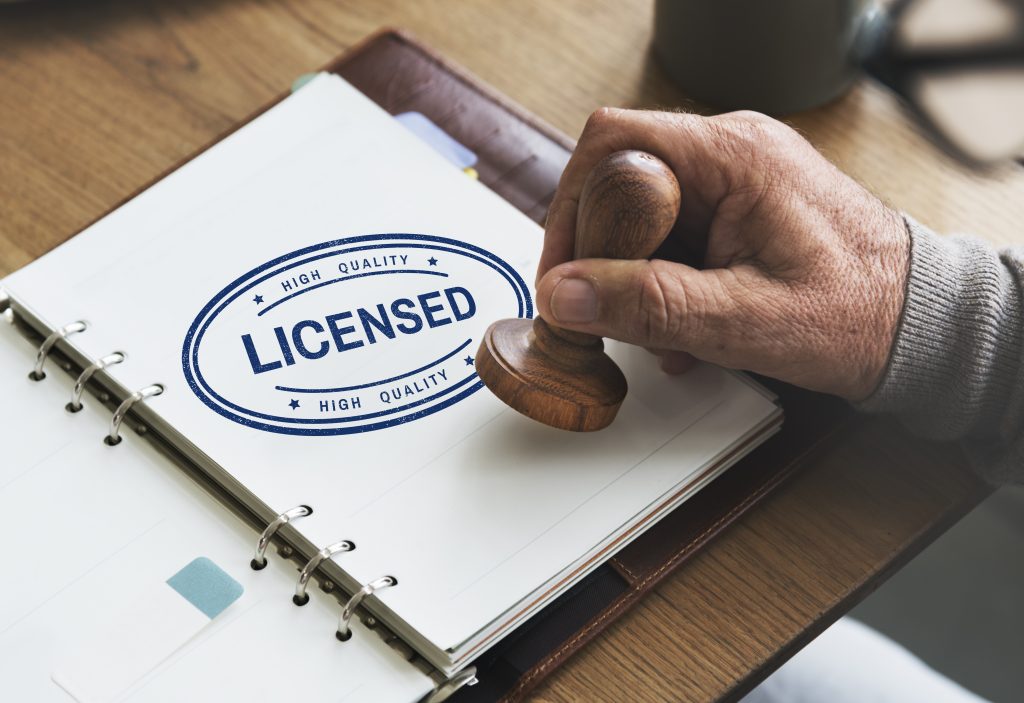
As you embark on your journey to become a professional drone photographer, obtaining a license and insurance are vital steps to ensure the safety, legality, and professionalism of your operations.
- Legality and Compliance: Many countries and regions have specific regulations and requirements governing the operation of drones.
Obtaining a drone license or certification demonstrates your commitment to adhering to these regulations and operating your drone business legally. It provides you with knowledge and understanding of airspace rules, flight restrictions, and safety protocols.
By obtaining a license, you avoid potential fines, penalties, or legal issues that could arise from flying a drone without proper authorization. - Professionalism and Credibility: Holding a license or certification adds credibility to your drone photography business. It demonstrates your commitment to professionalism and responsible conduct in the industry.
Clients, potential collaborators, and authorities are more likely to trust and engage with licensed drone photographers, knowing that they have the necessary knowledge and expertise to operate their equipment safely and efficiently. - Safety and Risk Management: Drones, like any other technology, come with inherent risks. Mishaps, accidents, or technical failures can occur, potentially causing damage to property, injury to individuals, or legal liabilities.
Having appropriate insurance coverage safeguards you against these risks.
Drone insurance policies can provide coverage for third-party liability, drone damage or loss, personal injury, and equipment theft.
By being insured, you protect yourself, your clients, and the public from potential financial burdens in case of unforeseen events. - Client Assurance: Clients hiring drone photographers often value professionalism and peace of mind. When you can provide proof of your license and insurance coverage, it instills confidence in your clients.
They know that they are working with a qualified and responsible professional who takes their safety, legal compliance, and project outcomes seriously. It sets you apart from competitors who may not have taken these steps, giving you a competitive edge in the industry. - Access to Commercial Opportunities: In many cases, commercial projects or collaborations require licensed and insured drone operators.
Clients, businesses, and organizations seeking drone photography services for real estate, construction, surveying, aerial inspections, and other professional applications often prioritize working with licensed and insured operators due to legal and safety requirements.
To obtain a license, research the specific requirements of your country or region’s aviation authority or regulatory body. Typically, this involves passing a knowledge test, demonstrating flying skills, and completing the necessary paperwork.
When it comes to insurance, consult with insurance providers specializing in drone coverage to understand the options available and choose a policy that aligns with your business needs and budget.
4. Make yourself educated on Drone Laws
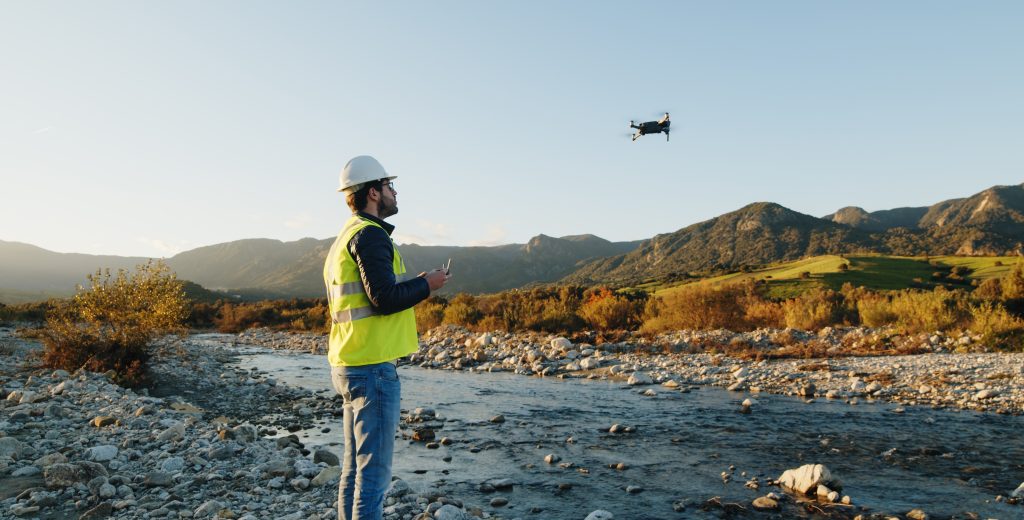
To educate yourself on drone laws, start by researching the regulations specific to your country or region. Visit the website of the aviation authority to access official guidelines, documents, and resources.
Join online communities or forums where drone enthusiasts and professionals share information and experiences. Attend workshops, seminars, or training programs that provide updates on drone laws and best practices.
If you’re a drone photographer in the United States, it is crucial to familiarize yourself with the regulations set forth by the Federal Aviation Administration (FAA).
The FAA governs the operation of drones for recreational and commercial purposes to ensure safety, airspace management, and compliance with federal laws.
5. Mastering Drone Photography Techniques
Explore Different Composition Techniques
When it comes to drone photography, composition plays a vital role in creating captivating and visually appealing images. A well-composed aerial photograph can convey a sense of scale, depth, and beauty that captures the viewer’s attention.
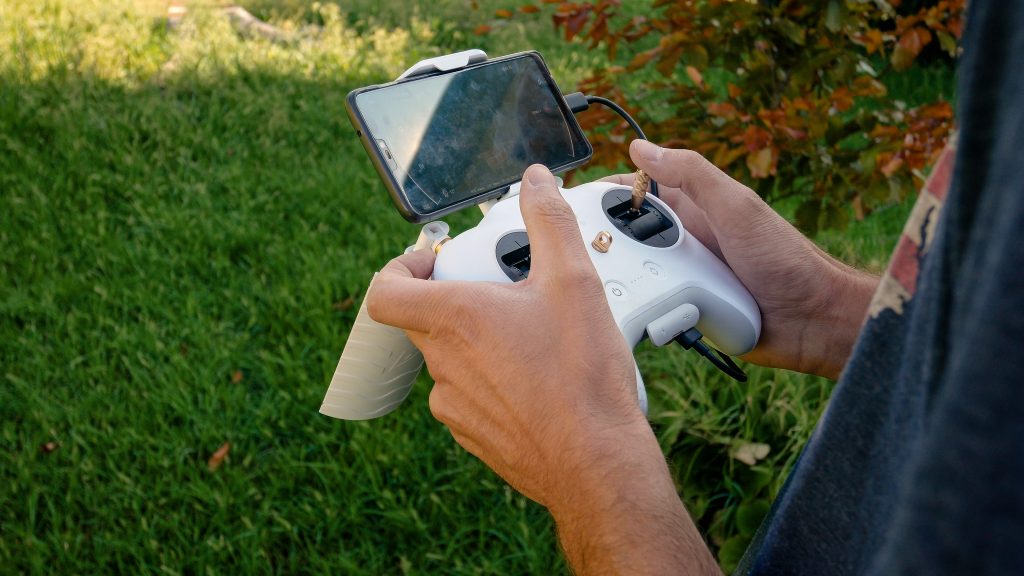
In this section, we’ll explore some composition techniques specifically tailored to aerial photography.
- Rule of Thirds: The rule of thirds is a fundamental principle in photography. Imagine a grid divided into nine equal parts with two horizontal lines and two vertical lines.
When composing your aerial shots, consider placing the horizon, prominent landmarks, or other points of interest along these grid lines. - Leading Lines: Leading lines are elements that draw the viewer’s eye into the photograph, creating a sense of depth and guiding their gaze toward the main subject. In aerial photography, natural leading lines can be rivers, roads, or patterns in the landscape.
- Framing: Framing involves using elements in the scene to create a frame around your subject, drawing attention to it and adding depth to the photograph. You can use natural elements such as trees, arches, or structures to frame your subject.
Experiment with different angles and compositions to find unique framing opportunities that add visual interest to your images. - Symmetry and Patterns: Aerial photography and videography provide a unique perspective to capture symmetrical scenes and patterns.
Look for geometric patterns, repetition, or symmetry in the landscape, such as rows of crops, buildings, or natural formations. Symmetry and patterns can create visually striking images that highlight the balance and beauty of the scene. - Point of Interest: Every aerial photograph should have a clear focal point or point of interest that grabs the viewer’s attention. It could be a prominent landmark, an interesting subject, or a contrasting element within the frame.
Make sure to position your drone and compose your aerial shot in a way that emphasizes the point of interest and allows it to stand out. - Negative Space: Negative space refers to the empty or unoccupied areas in a photograph. In aerial photography, negative space can help create a sense of scale and highlight the subject by providing a contrasting backdrop.
Experiment with compositions that incorporate vast open spaces or sky, allowing the main subject to shine. - Perspective and Angle: Aerial photography offers the advantage of capturing unique perspectives that are not easily achievable from the ground.
Explore different angles, heights, and viewpoints to showcase the subject in a fresh and compelling way.
Low altitude flights can provide a more intimate perspective, while higher altitudes can offer a broader view of the landscape.
Understand the significance of Lighting and Timing
Lighting and timing are critical factors in drone photography that can significantly impact the mood, aesthetics, and overall quality of your images. Understanding how to leverage light and timing effectively will elevate your drone photography to new heights. Let’s delve into the significance of lighting and timing in drone photography:
- Golden Hour: The golden hour, which occurs shortly after sunrise and before sunset, is renowned for its warm and soft lighting. During this time, the sun is lower in the sky, casting long shadows and creating a magical atmosphere.
The golden hour enhances the colors, textures, and depth in your photographs, making it an ideal time to capture stunning aerial shots. - Blue Hour: The blue hour is the period of twilight before sunrise and after sunset when the sky displays a deep blue hue. This time offers a unique and ethereal lighting that can add a sense of tranquility and mystery to your images. Experiment with long exposures during the blue hour to capture stunning nightscapes or cityscapes with vibrant, saturated colors.
- Overcast and Cloudy Days: While clear, sunny days are often preferred for photography, overcast and cloudy conditions can create a soft, diffused light that is perfect for certain subjects and moods. Clouds act as natural diffusers, reducing harsh shadows and creating a more even lighting across the scene. Use these conditions to your advantage, especially for capturing landscapes or adding a moody ambiance to your shots.
- Shadows and Textures: The direction and length of shadows in drone photography can add depth, drama, and interest to your images. As the sun moves throughout the day, shadows change in length and direction, casting unique patterns on the landscape.
Pay attention to the angle of the sunlight and experiment with compositions that emphasize the interplay between light and shadow, highlighting textures and creating a three-dimensional effect.
Capturing Unique Perspectives and Creative Shots
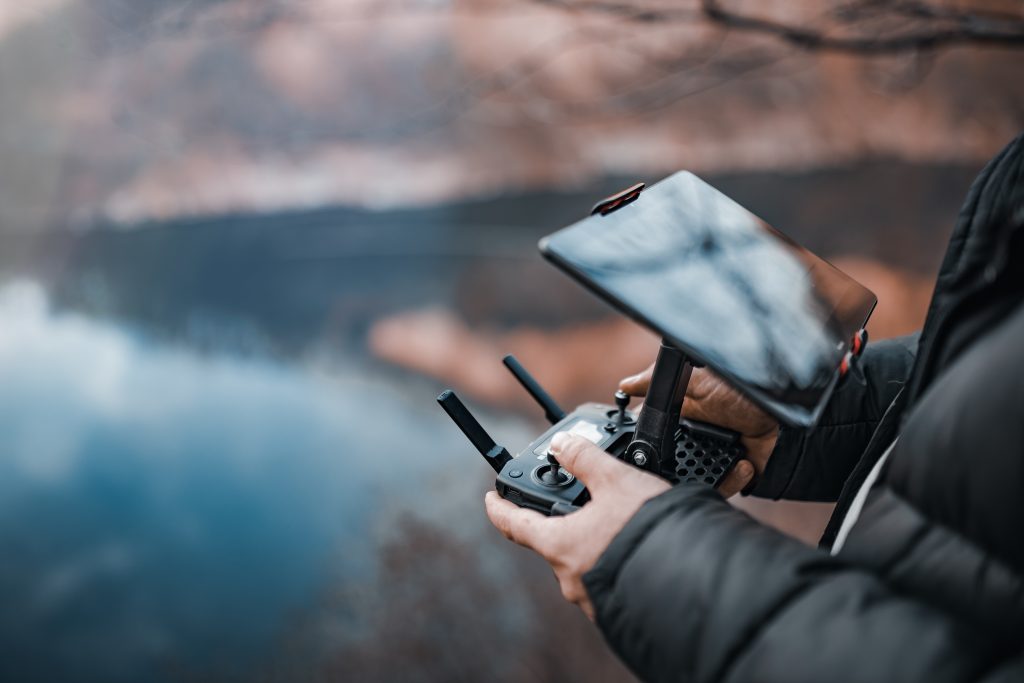
- Explore Different Altitudes and Angles: One of the advantages of drone photography is the ability to explore different altitudes and angles. Fly your drone at varying heights to capture unique perspectives that are not possible from the ground.
Experiment with low-level flights to capture intimate details or rise to higher altitudes for a bird’s-eye view of the landscape. Tilt the camera at different angles to add dynamic elements to your composition. - Incorporate Foreground Elements: Adding foreground elements can provide depth and context to your aerial photographs.
Look for interesting elements such as trees, buildings, or rocks to include in the foreground, leading the viewer’s eye into the frame. This technique adds a sense of scale and visual interest, making your shots more engaging and immersive. - Create Symmetry and Reflections: Aerial photography offers unique opportunities to capture symmetry and reflections from above.
Look for bodies of water, such as lakes, rivers, or even puddles after rainfall, to capture stunning reflections of the surroundings. Symmetrical compositions, whether from natural or man-made structures, can create visually pleasing and harmonious images. - Experiment with Motion and Long Exposures: Drones allow for capturing movement and long exposure shots from the air.
Experiment with capturing the motion of waves, moving vehicles, or even people. - Shoot in Different Weather Conditions: Don’t limit yourself to shooting only on sunny days. Embrace various weather conditions, such as fog, rain, or snow, to capture unique and atmospheric shots. Each weather condition brings its own charm and can create mood and drama in your photographs.
Creativity knows no bounds in drone photography. Continuously explore new perspectives, experiment with different techniques, and push the boundaries of your creativity to capture stunning and unique images that leave a lasting impression.
By understanding the significance of lighting and timing in drone photography and applying tips for capturing unique perspectives and creative shots, you’ll unlock endless possibilities to create visually striking and memorable aerial photographs.
6. Showcasing and Marketing Your Work
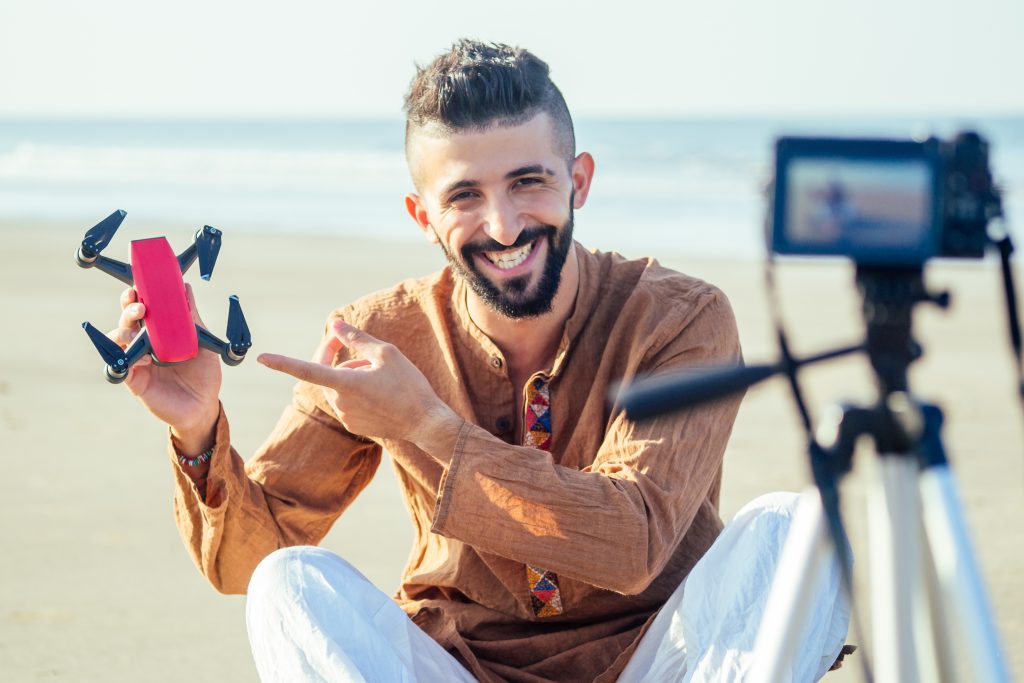
The significance of building a portfolio and online presence
In the digital age, building a strong portfolio and establishing a compelling online presence are essential for showcasing your drone photography or videography skills and attracting clients. A well-curated portfolio and online presence serve as powerful marketing tools that demonstrate your expertise, style, and creativity. Let’s explore the significance of building a portfolio and online presence:
- Professional Image: A portfolio showcases your best work, allowing potential clients to gauge your skills and the quality of your photography. By carefully selecting and organizing your best aerial photographs, you can present a professional image and leave a lasting impression on those who view your portfolio.
- Targeted Presentation: A portfolio allows you to curate and present your work in a targeted manner. Tailor your portfolio to showcase specific niches or industries that you specialize in, such as real estate photography, landscape, or commercial drone photography.
- Visual Storytelling: A portfolio enables you to tell a visual story through your drone photography. Consider organizing your portfolio in a way that creates a cohesive narrative or showcases your unique style. This helps potential clients understand your creative vision and the story you can help them tell through your aerial imagery.
- Building Trust and Credibility: A well-designed portfolio and online presence contribute to establishing trust and credibility with potential clients. Show the potential clients your client testimonials and any industry recognition or awards you’ve received.
Explore Different platforms for sharing and marketing your drone photography
To effectively share and market your drone photography, it’s important to leverage various online platforms and networks that cater to photographers and potential clients. Here are some platforms worth exploring:
- Website: Create a dedicated website that serves as your online portfolio and hub for showcasing your drone photography. Design it in a visually appealing and user-friendly manner, making it easy for visitors to navigate and view your work. Include an about page, portfolio sections, contact information, and any additional services or packages you offer.
- Social Media: Utilize popular social media platforms such as Instagram, Facebook, Twitter, and LinkedIn to share your drone photography and engage with a broader audience.
Regularly post your best work, share behind-the-scenes insights, and interact with other photographers, potential clients, and industry influencers.
Utilize relevant hashtags and engage in targeted communities or groups to expand your reach. - Photography Communities and Forums: Join online photography communities and forums, such as Flickr, 500px, or drone-specific platforms like SkyPixel. Participate in discussions, seek feedback on your work, and connect with fellow photographers. These communities can offer valuable networking opportunities and exposure to a wider audience.
- Stock Photography Platforms: Consider submitting your drone photography to stock photography platforms like Shutterstock, Getty Images, or Adobe Stock. These platforms provide opportunities to sell your images to a global client base, including media agencies, businesses, and content creators.
Promoting and Monetizing your drone Photography Business
- Online Marketing Strategies: Invest time in learning online marketing techniques to effectively promote your drone photography business. This includes understanding search engine optimization (SEO) to improve the visibility of your website and using targeted advertising platforms like Google Ads or Facebook Ads to reach potential clients.
- Networking and Collaboration: Attend industry events, workshops, and conferences to connect with fellow photographers, potential clients, and industry professionals. Building a strong network can lead to collaborations, referrals, and new opportunities for your drone photography business.
- Client Testimonials and Referrals: Encourage satisfied clients to provide testimonials that highlight their positive experiences working with you. Display these testimonials on your website or social media platforms to build trust and attract new clients. Offer incentives or referral programs to encourage clients to refer your drone services to others.
- Specialized Services and Packages: Consider offering specialized drone services or packages tailored to specific industries or niches. For example, offer real estate drone photography packages that include aerial shots of properties, or provide aerial surveying services for construction or land development projects. By catering to specific needs, you can differentiate yourself in the market and attract clients seeking those specialized services.
- Licensing and Commercial Usage: Explore licensing opportunities for your drone photography. This could involve selling prints, licensing images for commercial use, or offering limited edition prints. Licensing your work can provide additional revenue streams and help monetize your drone photography business.
Effective promotion and monetization of your drone photography business require consistency, perseverance, and continuous learning. Stay updated on industry trends, adapt your marketing strategies accordingly, and always deliver high-quality work that exceeds client expectations.
7. Improve Your Drone Photography by Looking at others
One of the most effective ways to enhance your drone photography skills is by looking at the work of other talented drone photographers.
Observing and studying their techniques, compositions, and creative choices can inspire new ideas and approaches to elevate your own aerial imagery.
Here’s how you can improve your drone photography by learning from others:
Study Composition and Perspectives:
Explore the work of established drone photographers and analyze their compositions. Pay attention to how they utilize leading lines, symmetry, and other compositional techniques to create visually captivating images. Observe the perspectives they choose and how they effectively capture unique angles and viewpoints from the sky. Take note of the elements that make their photographs stand out and incorporate these insights into your own compositions.
Analyze Lighting and Timing:
Notice how experienced drone photographers utilize different lighting conditions and timing to their advantage. Observe how they work with the golden hour, blue hour, or dramatic weather conditions to create visually stunning shots.
Pay attention to how they capture the interplay of light and shadows, and learn how to use natural lighting to enhance the mood and atmosphere of your own photographs.
Explore Editing Techniques:
Many drone photographers share their editing workflows and techniques online. Study their post-processing methods to understand how they enhance colors, adjust exposure, and bring out details in their aerial images.
Experiment with these editing techniques, but also develop your own style by incorporating your unique artistic vision and preferences.
Engage with the Drone Photography Community:
Join online communities, forums, and social media groups dedicated to drone photography. Engage in conversations, ask questions, and participate in constructive critiques.
Attend Workshops and Webinars:
Look for workshops, webinars, or masterclasses conducted by accomplished drone photographers. These educational opportunities provide a hands-on learning experience, allowing you to gain practical knowledge, receive personalized guidance, and develop new skills.
Interacting with experts in the field and fellow enthusiasts can inspire you and provide valuable insights into the craft of drone photography.
Embrace Collaboration:
Seek opportunities to collaborate with other photographers, both aerial and ground-based. Collaborative projects can offer fresh perspectives, stimulate creativity, and help you learn from each other’s techniques and experiences. It’s also a chance to explore new locations, experiment with different genres, and expand your portfolio.
While learning from others is valuable, it’s equally important to develop your own unique style and artistic vision. Use the knowledge and techniques you gain from studying other drone photographers as a foundation, but don’t be afraid to experiment, take risks, and develop your own creative voice.
Conclusion
Becoming a drone photographer is an exciting journey that offers limitless creative possibilities and the opportunity to capture stunning aerial imagery. Throughout this blog, we have explored the essential steps to embark on this path and develop your skills as a drone photographer. Let’s recap the key takeaways:
- Understanding Drones and Photography: Familiarize yourself with different types of drones, their features, and camera specifications. Learn about the importance of stabilization and choosing the right equipment for your photography needs.
- Buying a high-quality drone: Buying a quality drone is the most important step that you should not overlook.
- Get Licensed: When you fly drones commercially, you must get the necessary license.
- Educate yourself on drone laws: Learn about drone rules and regulations.
- Mastering Drone Photography Techniques: Explore composition techniques, lighting, and timing to create visually striking aerial photographs. Experiment with perspectives, angles, and creative elements to capture unique and captivating shots.
- Showcasing and Marketing Your Work: Build a portfolio and establish a strong online presence to showcase your skills and attract clients. Utilize platforms such as websites, social media, and photography communities to share your work and engage with a wider audience.
- Improve Your Drone Photography by Looking at Others: By taking inspiration from fellow bloggers you can actually learn a lot.
Throughout this blog post, we have emphasized the importance of continuous learning, experimentation, and finding your unique creative voice.
The journey to becoming a drone photographer is a blend of technical expertise, artistic vision, and business acumen. Embrace the challenges, enjoy the process of learning and capturing aerial imagery, and let your passion for drone photography soar. The sky’s the limit!

